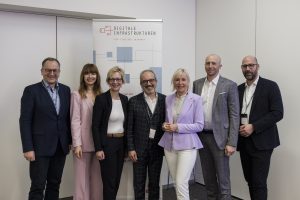Only by working together can we shape a green digitalisation and future – that was the tenor of this year’s DIGISUSTAIN at KAP Europa. On 29 April, eco hosted the “Digital and Sustainable Transformation” stage and welcomed numerous players from business and politics who are driving forward sustainable digital transformation.
The Minister of Digital Affairs of the German state of Hesse, Prof. Kristina Sinemus, opened the stage with a keynote speech after a welcome address by eco’s Managing Director Alexander Rabe, in which she emphasised the sustainability potential of digitalisation and the significant role of digital technologies in achieving the 2030 climate targets. In this context, she underlined the need for geopolitically resilient digitalisation and strong digital infrastructures.

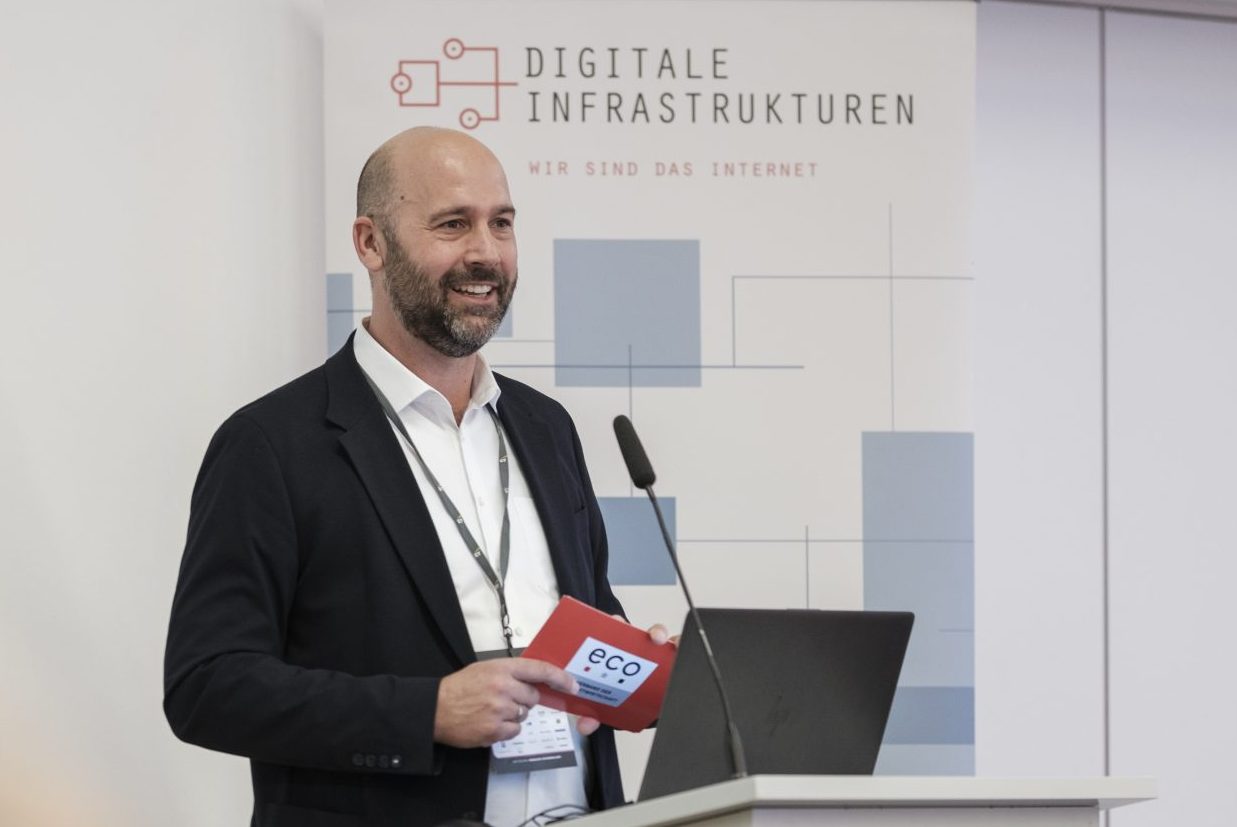
Digital technologies and infrastructures enable greater sustainability
The positive effects of digitalisation were also corroborated by Lars Riegel from Arthur D. Little, who presented the results of the study “Digital Transformation for More Sustainability”, which was produced in cooperation with eco and the Alliance for the Strengthening of Digital Infrastructures in Germany. This proves that the consistent use of digitalisation levers in industry, rural and urban areas can achieve emission savings of 163 megatonnes of CO2 by 2050, which corresponds to around 20 per cent of the total emissions forecast for Germany. Digitalisation is therefore part of the solution for greater sustainability.
The basis for a successful green digital transformation is an efficient ecosystem of digital infrastructures. Members of the Alliance for the Strengthening of Digital Infrastructures in Germany, founded under the umbrella of eco, Béla Waldhauser, Günter Eggers and Volker Ludwig, discussed the necessary requirements for a strong digital location in Germany in the panels moderated by Sidonie Krug with Prof. Sinemus and GI (Gesellschaft für Informatik e.V.) President Christine Regitz. This requires efficient and resilient digital infrastructures, which are based on data centres. The latter are intrinsically motivated to maximise energy efficiency and sustainability and strive for constant optimisation. However, inconsistent requirements at the EU and national levels, enormous documentation obligations and regulations that are difficult to implement are currently hampering their work.
As Germany has by far the strictest energy efficiency requirements in an international comparison, flagship projects and innovative solutions are emerging, including for the utilisation of waste heat, which are also being recognised abroad. At the same time, data centre operators are confronted with over-regulation, inconsistent documentation requirements and the resulting legal uncertainties. The German federal government needs to create more clarity and feasibility here.
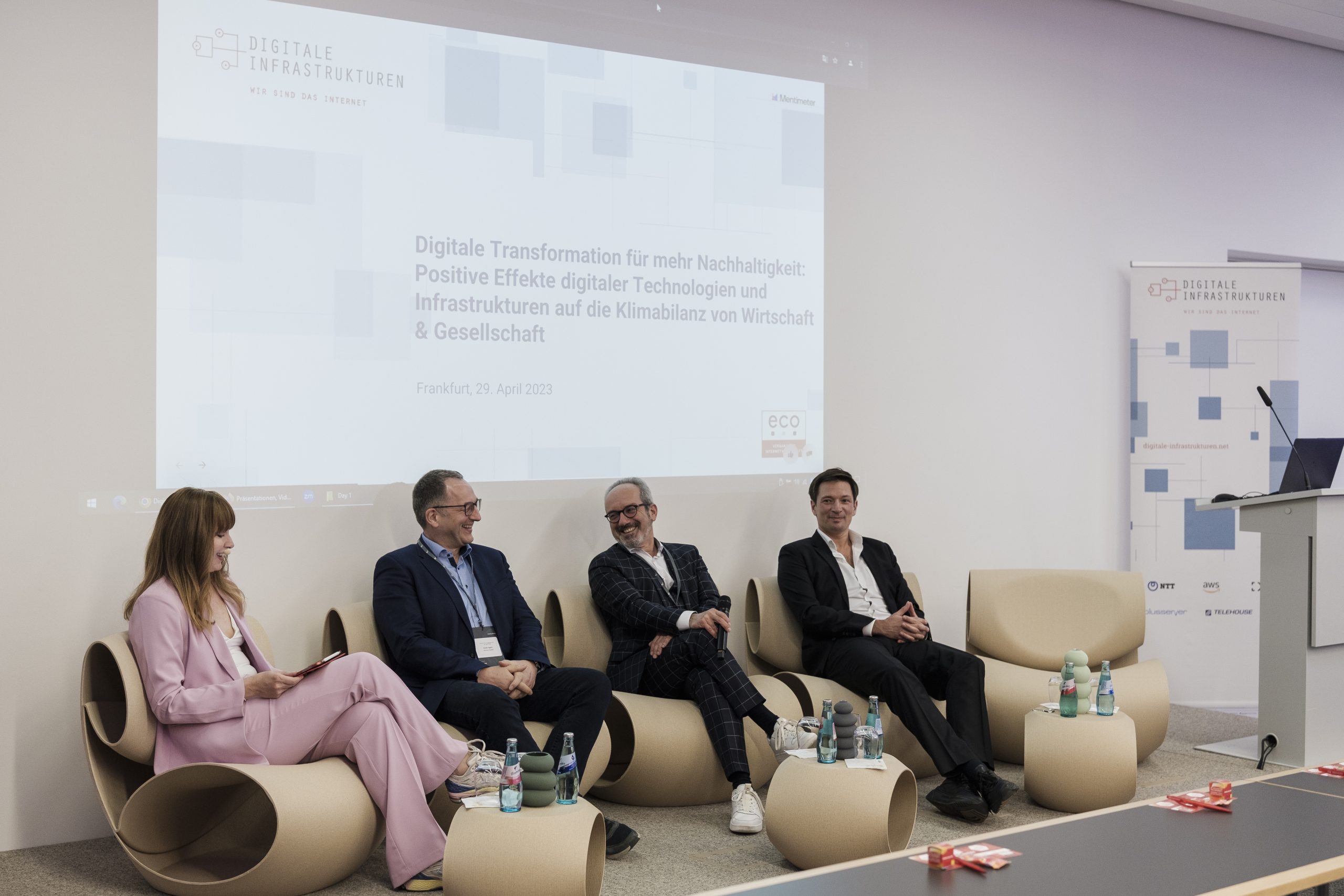
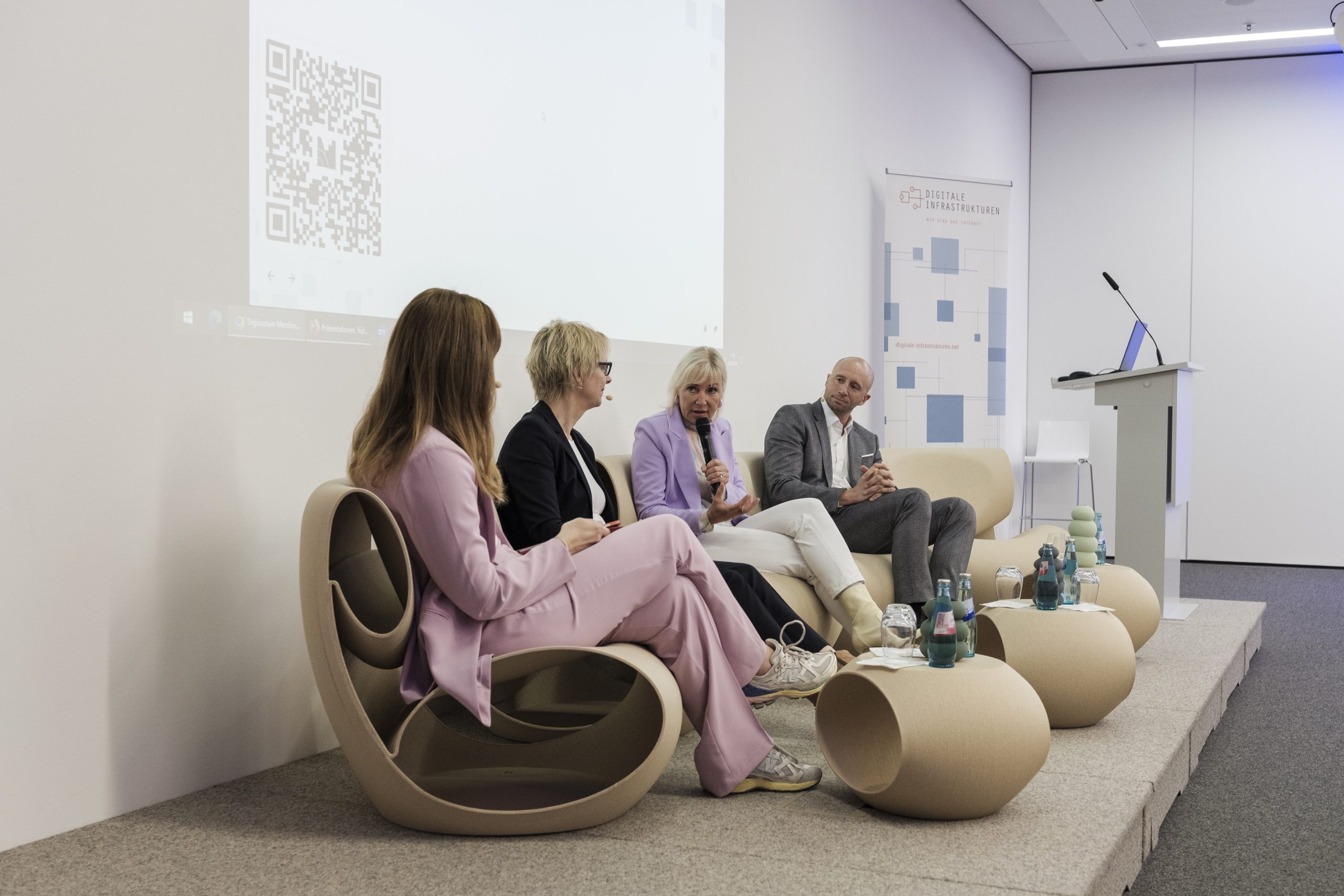
Gaia-X – on the way to a sustainable European data infrastructure
A keynote speech by eco’s Managing Director Andreas Weiss and a subsequent panel moderated by Emma Wehrwein focussed on the topic of the data economy. She spoke with Andreas Weiss, Rainer Sträter (IONOS) and Linda Rülicke (Fraunhofer IEE) about the role of digital IFS and services in achieving sustainability goals, which are also significant building blocks for more climate protection.
Accordingly, digitalisation can help to achieve greater creative capacity in Germany and make energy generation, distribution and use more efficient through the use of digital technologies. Practical use cases that are based on collaborative data ecosystems and pursue sustainability goals already exist today, such as Marispace-X or Catena-X. The next step could be the scaling of such ecosystems and production-ready solutions that are independently supported by the economy and are not dependent on funding. The debate also focussed on digital identities and data sovereignty, which are becoming increasingly relevant for the collaborative use of data. Through consistent and secure use and implementation, these not only create added value for nature, but ultimately also for people.
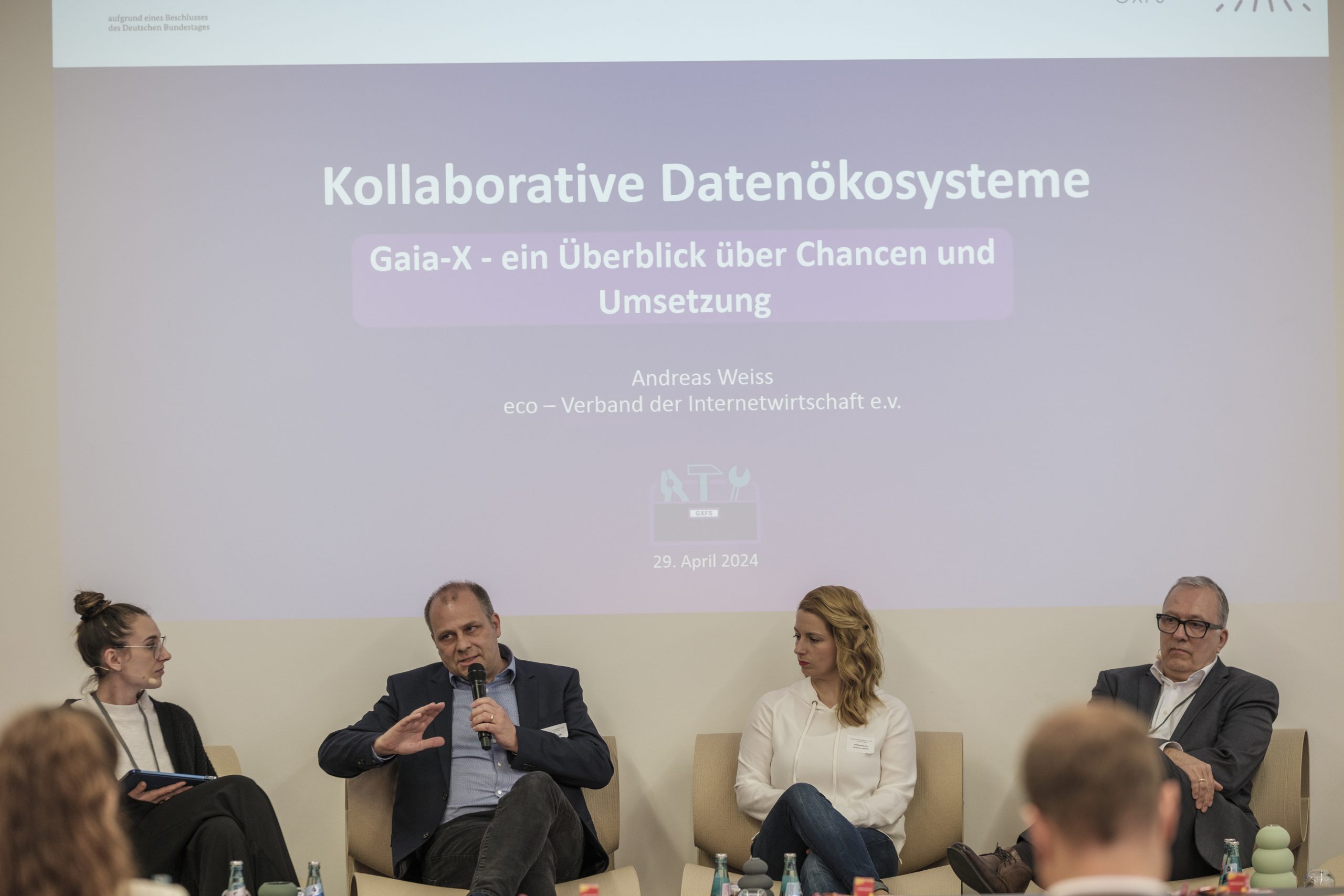
EU projects FAME and TANGO as flagship projects of federated marketplaces
Federated marketplaces, which have already been launched by the EU, can make a further contribution to greater sustainability. The panel moderated by Lauresha Memeti with Antonio Sottosanti (GFT Italia S.r.l.), John Soldatos (INNOV-ACTS LTD), Geert Machtelinckx (SSI Fujitsu), Claudia Mertinger (SSI Fujitsu) and Ville Ollikainen (VTT Technical Research Centre of Finland) discussed the measures necessary for such platforms to build user trust, sustainable data practices and the unique features of these platforms compared to traditional marketplaces.
The TANGO project enables trustworthy data management and data sharing while warranting data sovereignty and security, as the project focuses on regulatory compliance and data protection, especially GDPR requirements. In contrast, FAME, which is tailored to the financial sector, offers different data sets and is subject to a federated governance model. The panel highlighted the unique features of the projects and emphasised the potential of federated marketplaces to promote innovation and economic growth while ensuring compliance with EU-level regulations.
Federated data management systems and marketplaces must take strict measures to ensure that they are legally compliant and trustworthy. This includes minimising data to only necessary data, anonymising data, and consent management. According to Claudia Mertinger, transparent communication, accountability, shared values, consistent political frameworks, transparency in decision-making, and security measures are needed to ultimately establish such federated marketplaces successfully and thus contribute to greater climate protection.
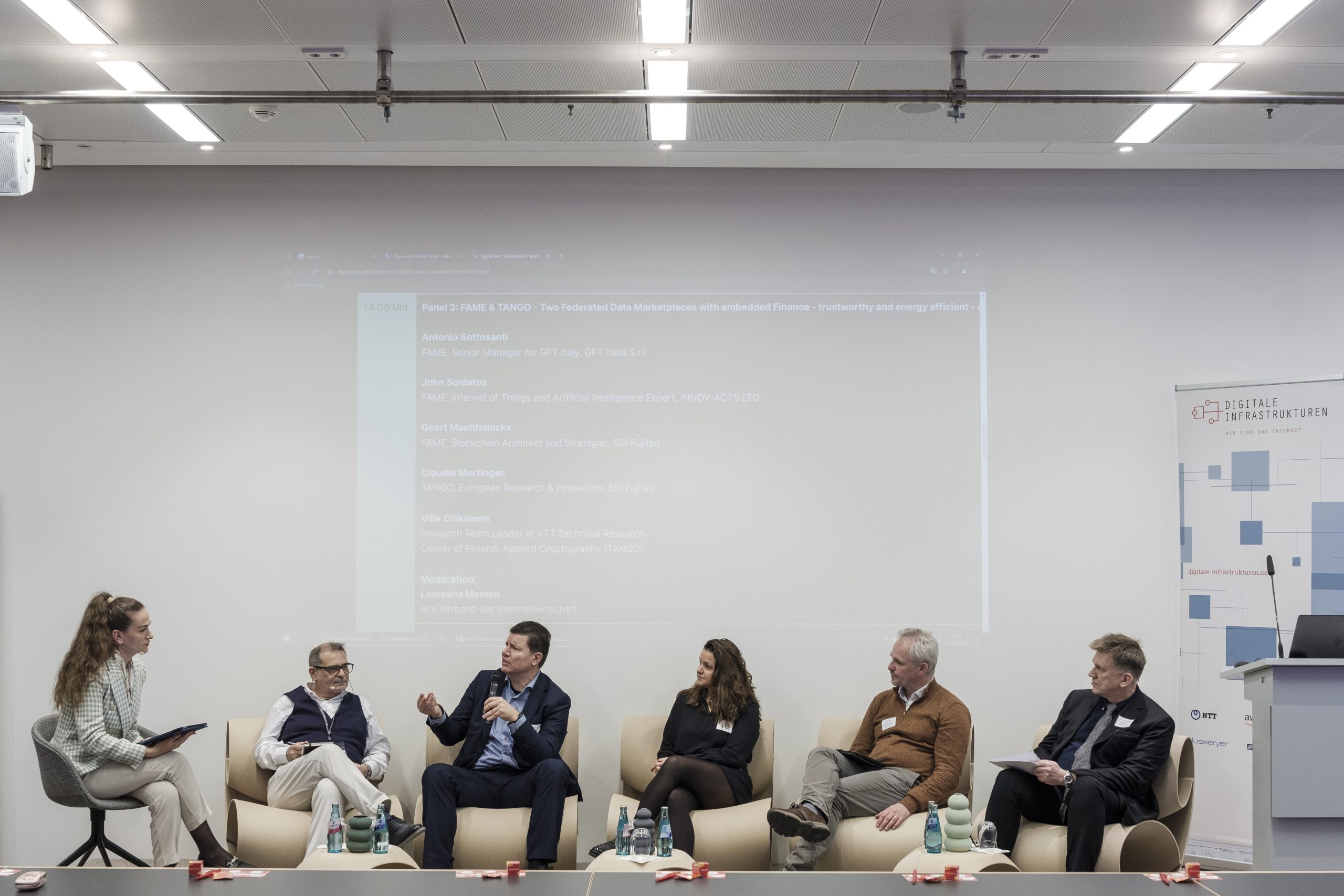
Better air with cloud sustainability
Michael Hase spoke on the panel with Bernd Wagner (Google Cloud Germany), Dr Markus Noga (IONOS), Elisabeth Goos (IBM) and Thorsten Raquet (PCG) about how cloud technologies can contribute to greater sustainability in the economy and the public sector. For example, data centres are increasingly trying to obtain energy from renewable sources and permanently optimise the utilisation of their systems. Overall, the scalability of cloud services can help users to reduce their carbon footprint. In industry, for example, emissions data along the value chain can be recorded, collated and analysed using intelligent services in order to derive measures for a more efficient use of resources.
Elisabeth Goos summarised that the cloud is an excellent enabler for sustainability. “However, the cloud alone will not save the climate,” the expert qualified. This requires a holistic approach from companies. Sustainability itself would have to be defined as a strategic goal and integrated into operations across all areas, which can even have a positive impact on financial performance. When it comes to saving the climate and using natural resources in a sustainable way, cooperation between companies is also important, emphasised Bernd Wagner. User companies, cloud and solution providers as well as service providers need to work together. “Sustainable solutions are created in the ecosystem,” said Wagner.

Green coding – every snippet counts
In the final panel, Marc Schröter (GlobalDatanet), Sebastian Ullrich (Protos), Yelle Lieder (Adesso), Christine Regitz (GI, SAP) and Peter Ahnert (Nagaro) spoke about the connection between software engineering and sustainability. Even if it consists of nothing more than code, software has a significant impact on how sustainable companies operate their IT. In this respect, it is not only aspects such as the runtime efficiency of applications and their resource requirements that play a role. According to the panellists, decisions about the architecture of applications and the infrastructure on which they run are at least as relevant to the carbon footprint.
The cloud is “not automatically more sustainable”, as Yelle Lieder, Green IT Lead at Adesso, made clear: “It always depends on the use case: You have to do it right and work with the right partners.” Cloud native applications with a modular architecture can often be more efficient because the allocation of resources can be granularly controlled and scaled. However, a monolithic structure can also make sense for applications with a constant workload. This is because cloud native software always requires a network infrastructure via which the microservices can communicate with each other.
In practice, developers and DevOps engineers still lack the metrics and tools they need to measure the actual energy consumption of their applications in the cloud. But the GI is working on this, according to Christine Regitz. According to the expert, expertise in the sustainable development of software is still not widespread enough among computer scientists. In principle, more awareness needs to be created for this. Universities could also make a greater contribution to this in their training programmes.
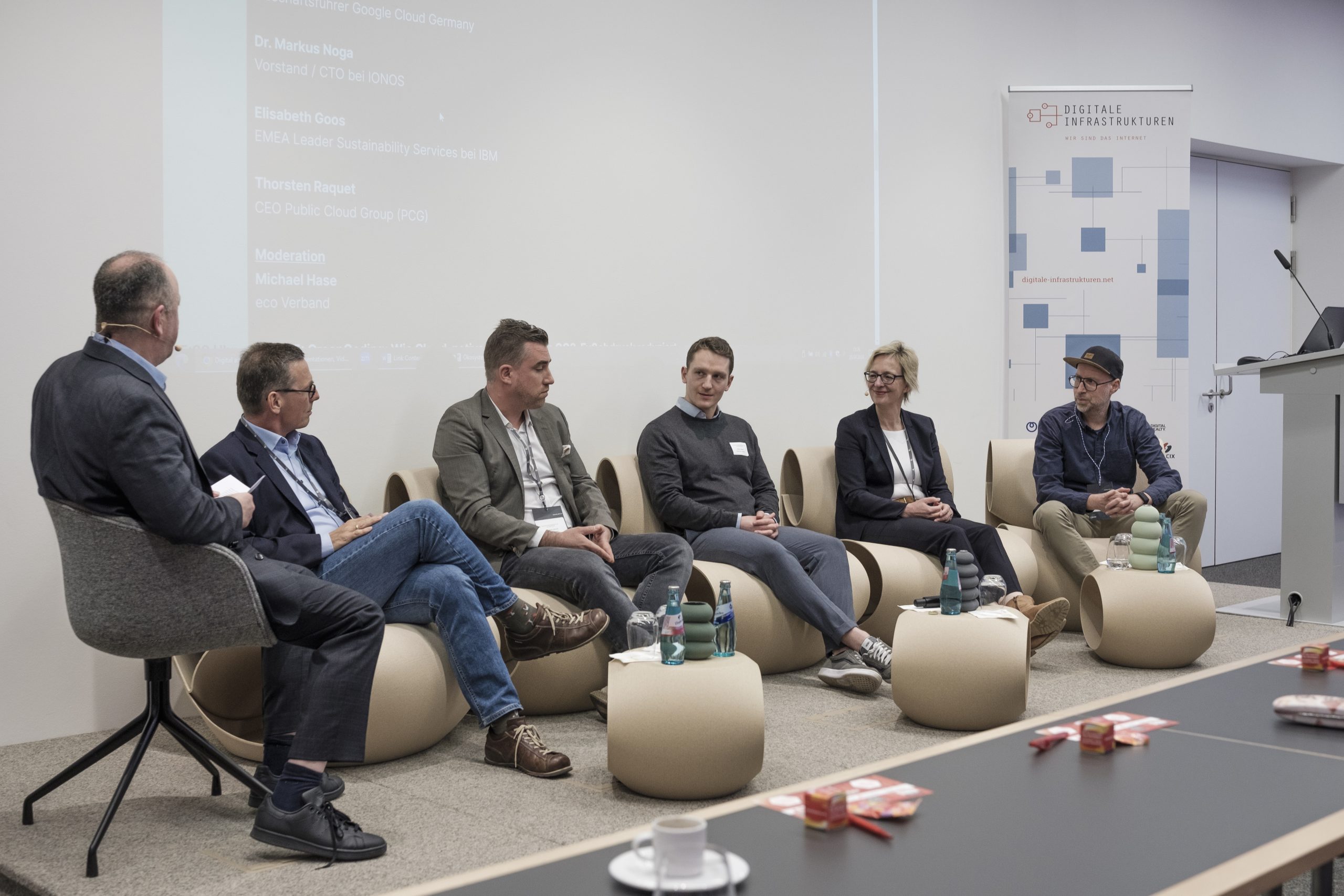
During the subsequent networking session, participants were able to exchange ideas and discuss their impressions of the 17 stages. Ultimately, it will take many committed players from business, politics and civil society to shape a green digital future. Numerous approaches already exist – as this year’s DIGISUSTAIN has shown.
Photos by Stefan Höning. All photos here.
